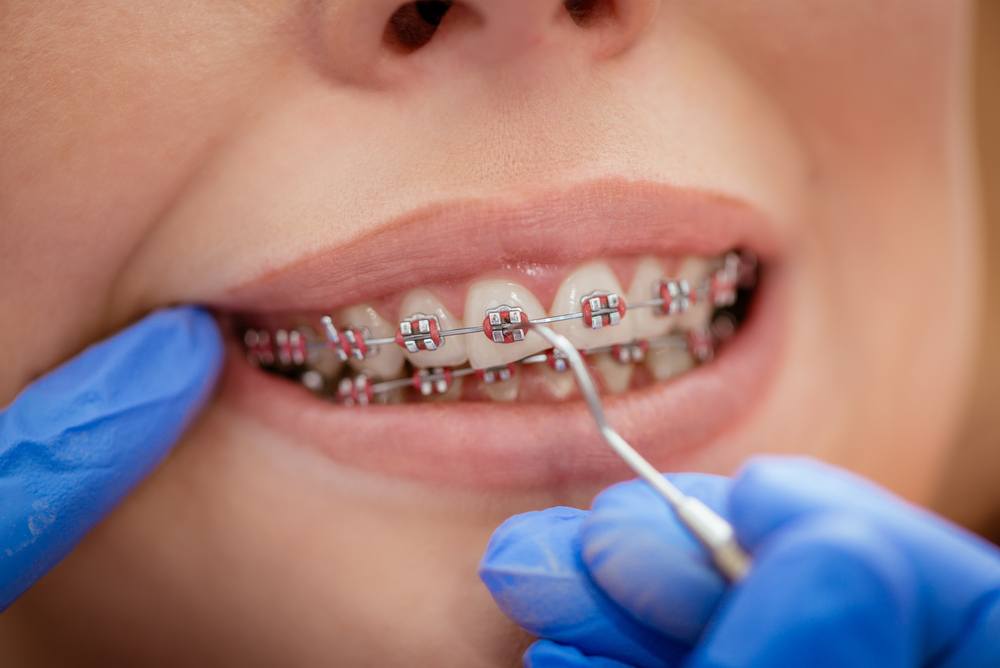How Cumming Orthodontics Addresses Common Braces and Invisalign Worries
Comprehensive Overview to Orthodontics Procedures for Correcting Dental Misalignments
Understanding the complexities of each procedure, including their systems, benefits, and potential drawbacks, is crucial in making informed decisions about one's orthodontic treatment. As we navigate via the comprehensive overview to orthodontic procedures for correcting dental misalignments, the elaborate details of each method will certainly unravel, dropping light on the course toward a useful and unified oral positioning.
Orthodontic Procedures Introduction

Normal modifications and surveillance are crucial parts of orthodontic therapy to ensure progression is on track and to make any required alterations along the means. By undergoing orthodontic procedures, patients can not only accomplish a straighter grin however likewise enhance their total oral wellness and function.
Typical Braces: Exactly How They Work
When taking into consideration orthodontic therapies for dental imbalances, typical dental braces stick out as a time-tested approach for remedying teeth positioning. Traditional dental braces contain brackets, cords, and bands that function with each other to use continuous stress on the teeth, progressively moving them into the wanted positioning. The brackets are connected to the teeth utilizing a special adhesive, and the cables are threaded through the braces. By changing the tension of the cables, orthodontists can control the instructions and force put on each tooth, assisting them into proper positioning in time.
One key element of just how conventional braces job is the process of bone makeover. As pressure is put on the teeth via the braces, the bone bordering the teeth is reshaped to sustain the new tooth settings. This remodeling is crucial for the long-term stability of the dealt with alignment. Clients will certainly require regular changes at the orthodontist's workplace to make sure the dental braces continue to apply the right stress for effective teeth movement.
Undetectable Aligners: Cons and pros
Unnoticeable aligners use a practical and very discreet option to standard dental braces for remedying oral imbalances. These clear, personalized trays are basically unseen when put on, making them an enticing option for people seeking a much more aesthetically pleasing orthodontic treatment. One of the key advantages of invisible aligners is their removability, permitting less complicated upkeep of dental health contrasted to standard dental braces. Clients can remove the aligners before consuming or cleaning their teeth, decreasing the danger of food getting embeded the device and streamlining the cleaning procedure.

Surgical Orthodontic Options
Surgical treatments in orthodontics existing sensible alternatives for addressing complex dental misalignments that may not be successfully resolved through traditional orthodontic treatments. While unnoticeable aligners and standard dental braces can remedy several orthodontic concerns, specific situations call for medical treatment to accomplish ideal results. Surgical orthodontic options are normally suggested for serious malocclusions, considerable jaw inconsistencies, and situations where the underlying bone structure needs adjustment to attain correct placement.
One typical surgical orthodontic procedure is orthognathic surgery, which entails rearranging the jaws to deal with useful concerns such as difficulty speaking or chewing. This surgical procedure is usually executed in cooperation with an orthodontist that helps straighten the teeth prior to and after the procedure. Surgical orthodontics might additionally include procedures to expose influenced teeth, eliminate excess gum cells, or reshape the jawbone to create a more unified facial account.
Before thinking about surgical orthodontic alternatives, people undergo a detailed assessment to figure out the need and prospective benefits of such treatments. cumming braces. While surgical treatment may appear complicated, it can considerably boost both the function and aesthetics of a dentist works in a dental the smile in situations where traditional orthodontic treatments fail
Retainers and Post-Treatment Care

Failing to comply with post-treatment care instructions can result in relapse, where the teeth gradually move back towards their original positions. Consistent retainer wear, good oral original site hygiene, and regular dental check-ups are vital for preserving the outcomes accomplished via orthodontic surgical procedure and making certain the lasting security of the dealt with oral placement.
Final Thought
In verdict, orthodontic procedures supply different options for dealing with dental misalignments. Surgical orthodontic options are readily available for a lot more severe imbalances. In general, orthodontic treatments can successfully improve oral health and aesthetic look.
As we navigate via the extensive overview to orthodontic procedures for dealing with dental imbalances, the elaborate details of each technique will certainly unfold, shedding light on the path towards a functional and unified oral placement. - aligners
One of the most usual orthodontic treatments is the usage of dental braces, which consist of metal braces and cords that apply gentle stress to gradually move teeth right into the wanted setting.When taking into consideration orthodontic treatments for oral misalignments, standard dental braces stand out as a time-tested technique for remedying teeth placing. Additionally, unseen aligners might not be appropriate for complex orthodontic problems that call for even more significant teeth movement, as they are typically recommended for mild to modest instances. more tips here Retainers are custom-made orthodontic devices developed to hold teeth in their remedied placements after the conclusion of orthodontic therapy.